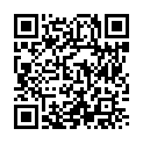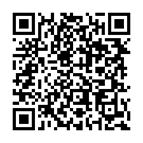Routine IT maintenance on Wednesday, December 17 will cause service interruptions between midnight and 6:00am affecting the YourHealthNS app and on-line appointment booking including COVID-19 testing, blood collection, X-Ray, EKG and the Need a Family Practice Registry. We apologize for any inconvenience.
What is TB?
Tuberculosis (TB) is a bacterial disease caused by TB germs (bacteria). TB usually affects the lungs but it can also affect other parts of the body, such as the brain, the kidneys, or the spine.
How is TB spread?
TB germs are put into the air when a person with active TB infection of the lungs or throat coughs, sneezes, speaks or sings.
People who breathe in the air containing these TB germs can become infected but not become sick; this is called latent TB infection. Some people who become infected with TB germs will later become sick, this is called active TB disease. Close, prolonged contact with someone who is sick with active TB disease involving the lungs or throat is needed to spread this disease.
TB is not spread by shaking someone’s hand, sharing food or drink, touching bed linens or toilet seats
sharing toothbrushes or kissing.
It is important to know that a person who is exposed to TB bacteria is not able to spread the bacteria to other people right away. Only a person with active TB disease can spread TB bacteria to others.
What is the difference between latent TB infection and TB disease?
People with latent TB infection have TB germs in their bodies but they are not sick because the germs are not active. These people do not have symptoms of TB disease and they cannot spread the germs to others.
In some people, the immune system is able to kill the bacteria entirely. In others, it can’t entirely kill the bacteria but does contain it so it doesn’t cause disease; in this case, if the immune system weakens, the bacteria can cause disease later.
People with TB disease are sick from TB germs that are active, meaning that they are multiplying and destroying tissue in their body. They usually have symptoms of TB disease (see below). People with TB disease of the lungs or throat are capable of spreading germs to others. They are prescribed drugs that can treat TB disease.
What are the symptoms of TB?
Common symptoms of TB disease include:
- feelings of sickness or weakness
- weight loss
- fever
- night sweats
Symptoms of TB disease of the lungs also include:
- coughing
- chest pain
- coughing up of blood
In children, this may also include new or prolonged cough (2-3 weeks), swollen lymph glands, severe headache, confusion, drowsiness or weight loss/failure to gain weight appropriately.
Symptoms of TB disease in other parts of the body depend on the area affected. Generally only people with TB disease of the lungs and throat are contagious, though TB disease affecting other parts of the body can make them individually very sick.
How do I know if I have TB infection or TB disease?
If you think you have been exposed to someone with TB disease, you should contact your healthcare provider to see if you need a TB skin test or a special TB blood test. A positive skin test means a person has the TB germ in their body. A physical examination, chest x-ray and sputum (mucous coughed up from the lungs) are done to check for TB disease.
What happens when someone breathes in the TB bacteria?
In most people who inhale TB bacteria/germs and become infected, the body’s immune system is able either to kill the bacteria or to contain it to stop it from growing. In the latter case, the bacteria become dormant, but they stay in the body and may become active later. People with latent TB infection are not infectious and cannot spread TB infection to others.
If the immune system can’t stop TB bacteria from growing, the bacteria multiply within the body and lead to TB disease. Some people develop TB disease soon after becoming infected (within weeks) before their immune system can fight the TB bacteria. Other people may get sick years later, when their immune system becomes weak for another reason. The person would be provided treatment and care as needed based on the their specific circumstances.
Can TB be treated?
Yes, it can be treated with TB medication and cured. The person will be checked regularly to make sure they are taking their medications and getting better.
General information about TB symptoms, diagnosis and treatment is available at https://www.canada.ca/en/public-health/services/diseases/tuberculosis.html.



